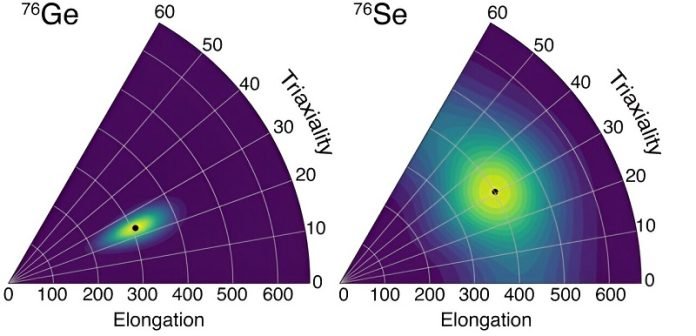
Neutrinos are tiny particles that are incredibly important in the world of physics.
They were once thought to have no mass, but groundbreaking discoveries showed they do have mass.
However, scientists still don’t know exactly how much they weigh. Experiments focusing on a process called neutrinoless double beta decay are key to figuring this out.
One such experiment uses an element called Germanium-76 (76Ge) to learn more about neutrinos.
A study in the journal Physical Review C has provided crucial information for these experiments.
The experiments with Germanium-based neutrinoless double beta decay (0νββ) are really exciting for scientists.
They could not only reveal the true nature of neutrinos but also help determine their mass.
However, to do this, scientists need to know the probability of this rare decay happening, which isn’t something they can directly measure. Instead, they have to calculate it theoretically, and there’s still a lot of debate about these calculations.
One of the factors that influences this probability is the shape of the nucleus of the atom. It turns out that the probability of the decay happening changes depending on the shapes of the parent and daughter nuclei (the original atom and the atom it becomes after the decay).
If the parent and daughter have different shapes, the probability is low. If they’re similar, it’s higher. The highest probability is when both nuclei are perfectly spherical.
Researchers have been studying the structure of 76Ge to understand this better. A team at the Triangle Universities Nuclear Laboratory (TUNL) found that 76Ge and its daughter, Selenium-76 (76Se), actually have different shapes. While 76Ge is kind of rigid in its shape, 76Se is more flexible. This finding is very important for figuring out the probability of the 76Ge undergoing neutrinoless double beta decay.
In simple terms, the study helps scientists better understand how likely it is for 76Ge to transform into 76Se without producing neutrinos. This is crucial for understanding the neutrino’s mass. If neutrinos are found to be their own antiparticles (a concept that’s still theoretical), these experiments could provide the key to finally knowing how much these elusive particles weigh.
This research isn’t just about solving a puzzle in physics; it’s about unlocking the secrets of the universe.
Neutrinos are everywhere, but we still know so little about them. Understanding their mass could change how we see the world and the universe. It’s a challenging journey, but each discovery brings scientists closer to the answers they’ve been seeking for decades.



